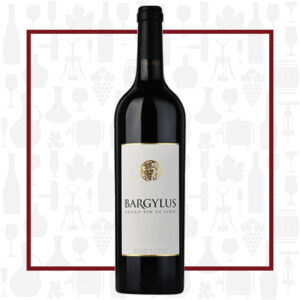Cellar Profile
Situated at 900 masl atop the Jabal al-Ansariyeh (its ancient name was Mt. Bargylus), outside the port city of Latakia, the vines of Domaine Bargylus are planted in a mix of limestone, flint and clay. The climate here is Mediterranean, with a large diurnal shift between daytime and nighttime temperatures. The vines are densely planted, but are low-yielding, netting only 1 kilo of grapes per vine. This is the only operating winery in Syria. These are arguably the most difficult wines to produce in the world; probably also the most dangerous. Since the outbreak of civil war in 2011, the vineyard has been targeted by Islamist rebels and the Syrian-Lebanese Saade brothers who run the estate have not been able to cross the border from Lebanon to visit. Winery equipment is difficult to source and spare parts have to be discreetly brought in by taxi. Samples of grapes and the finished wines have to make the perilous journey to Beirut, again by taxi via Syria’s northern border. The actual winemaking process is made over the Internet with the resident winemaker posting images of grapes and vines for the brothers to assess. Domaine Bargylus has been cited by wine critic Jancis Robinson as “arguably the finest wine of the Eastern Mediterranean”.
Region
Latakia is currently the only region in Syria that has an active operational winery. The internecine civil war has, unfortunately, curtailed any kind of investment in the region, despite its ability to grow extremely high quality grapes. Latakia sits on Syria’s coastal mountain range, in close proximity to the Mediterranean Sea, which provides cooling daytime breezes, essential during the heat of summer. The mountains are rich with deposits of limestone and flint, ideal for the cultivation of vitis vinifera, and the altitude (900 masl) ensures large diurnal shifts between the day and evening, cooling the grapes and slowing sugar production, to ensure full ripening of the skins and complexity of flavour in the finished wines.
Vineyard
Sitting atop the Jabal al-Ansariyeh mountain, Domaine Bargylus’ vineyard is maintained organically, with little to no intervention. The base of limestone underneath clay and deposits of flint are ideal for growing the Bordelaise grapes. Though the days during the growing season can be quite hot, the winds blowing off the sea cool the grapes, as do extremely cool evenings.
Varieties
Syrah was found to be the offspring of two obscure grapes from southeastern France, Dureza and Mondeuse Blanche. The style and flavour profile of Syrah is greatly influenced by the climate in which the grapes are grown. Moderate climates, such as the northern Rhône Valley, tend to produce medium- to full-bodied wines with medium to high levels of tannins and notes of blackberry, mint and black pepper. In hot climates, Syrah is more consistently full-bodied, with softer tannin, jammier fruit and spice notes of licorice, anise and earthy leather. Cabernet Sauvignon is probably the most famous red wine grape variety on earth and has successfully spread to almost every wine growing country. With small berries and thick skins, it adds tannic structure, colour and acidity to blends. Known for being soft, ripe and elegant, most Merlots are easy-drinking reds that go well with food but can also be enjoyed on their own. Merlot will help soften a wine that is too astringent or tannic, but can be quite structured on its own. It is a natural blending partner with Cabernet Sauvignon, such as in its ancestral home, Bordeaux.
Winemaking
The grapes are hand-harvested and carefully double-sorted, extracting any berries that are flawed, before gentle crushing. Using only gravity flows, the wine is punched down by hand during maceration. It is then transferred to a combination of new and used French oak barriques for malolactic fermentation and élevage. The wine rests for 14 months before being bottled, unfined and unfiltered, where it goes through an additional four years of aging before release.
Tasting Notes
Aromas of blackberry, cassis, menthol and bramble. Full-bodied and rich, the tannins are evolved and silky. Plum, white pepper, baking spice, kirsch and black cherry are framed by a surprising tingle of acids. Drinking elegantly now, it will reward further cellaring with the evolution of tertiary notes. Serve this with rack of lamb or braised beef.

 info@buyersandcellars.ca
www.buyersandcellars.ca
info@buyersandcellars.ca
www.buyersandcellars.ca